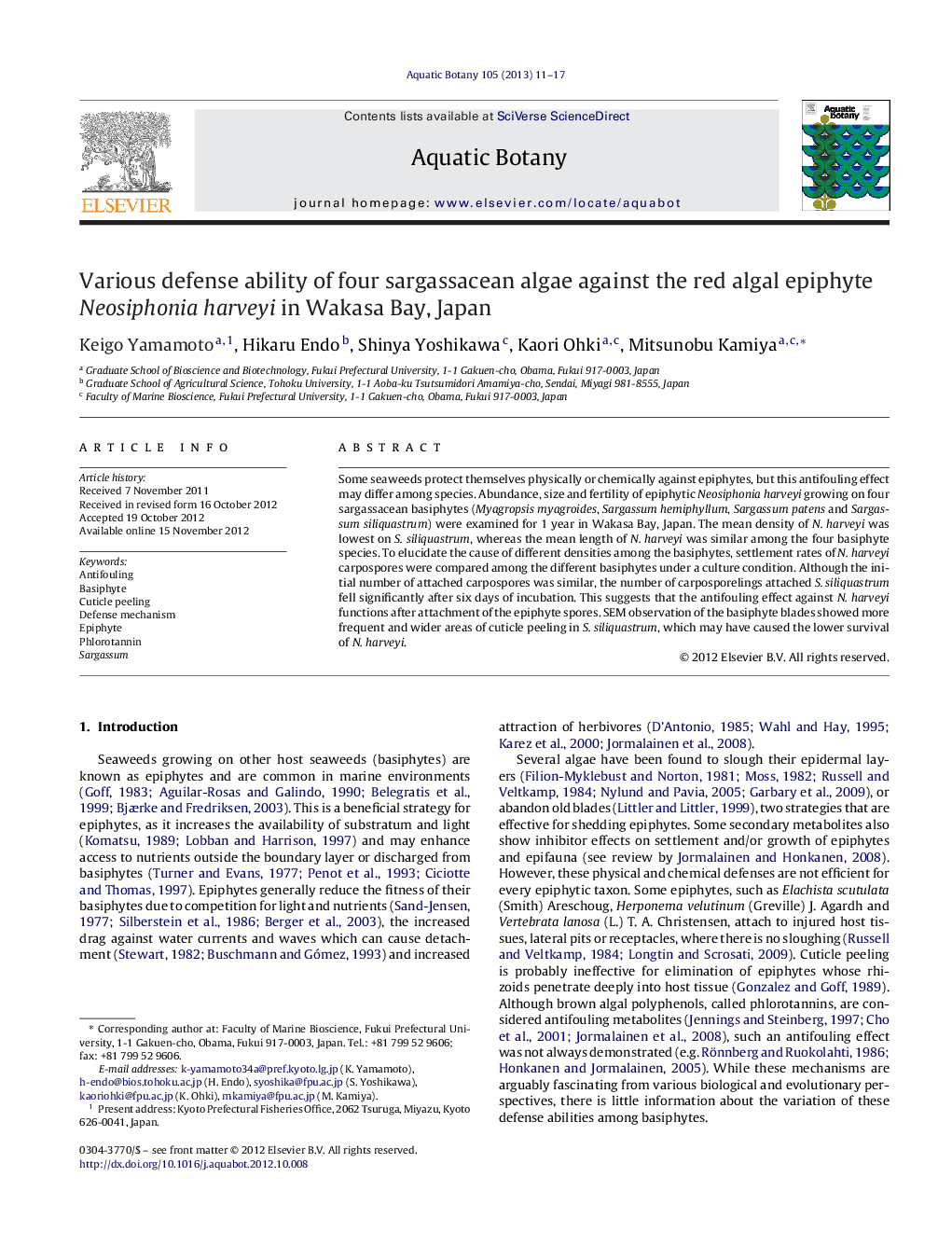| Article ID | Journal | Published Year | Pages | File Type |
|---|---|---|---|---|
| 4527951 | Aquatic Botany | 2013 | 7 Pages |
Some seaweeds protect themselves physically or chemically against epiphytes, but this antifouling effect may differ among species. Abundance, size and fertility of epiphytic Neosiphonia harveyi growing on four sargassacean basiphytes (Myagropsis myagroides, Sargassum hemiphyllum, Sargassum patens and Sargassum siliquastrum) were examined for 1 year in Wakasa Bay, Japan. The mean density of N. harveyi was lowest on S. siliquastrum, whereas the mean length of N. harveyi was similar among the four basiphyte species. To elucidate the cause of different densities among the basiphytes, settlement rates of N. harveyi carpospores were compared among the different basiphytes under a culture condition. Although the initial number of attached carpospores was similar, the number of carposporelings attached S. siliquastrum fell significantly after six days of incubation. This suggests that the antifouling effect against N. harveyi functions after attachment of the epiphyte spores. SEM observation of the basiphyte blades showed more frequent and wider areas of cuticle peeling in S. siliquastrum, which may have caused the lower survival of N. harveyi.
► Defense ability against epiphyte Neosiphonia harveyi was examined in four basiphytes. ► The number of epiphyteis significantly lowest on Sargassum siliquastrum. ► A decrease of N. harveyi on S. siliquastrum is observed after spore attachment. ► This low density of N. harveyi is possibly caused by more frequent cuticle peeling.
